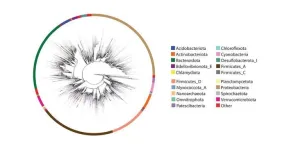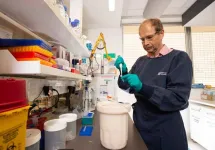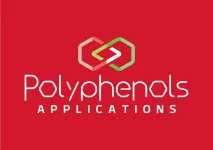(Press-News.org) Two leading sequencing techniques are no longer at odds, thanks to an international effort led by scientists at University of California San Diego. In a study published July 27, 2023 in Nature Biotechnology, the researchers debuted a new reference database called Greengenes2, which makes it possible to compare and combine microbiome data derived from either 16S ribosomal RNA gene amplicon (16S) or shotgun metagenomics sequencing techniques.
“This is a significant moment in microbiome research, as we’ve effectively rescued over a decade’s worth of 16S data that might have otherwise become obsolete in the modern world of shotgun sequencing,” said senior author Rob Knight, PhD, professor in the departments of Pediatrics at UC San Diego School of Medicine and Bioengineering and Computer Science at UC San Diego Jacobs School of Engineering. “Standardizing results across these two methods will significantly improve our chances of discovering microbiome biomarkers for health and disease.”
Microbiome studies depend on scientists’ ability to identify which microorganisms are present in a sample. To do this, they sequence the genetic information in the sample and compare it to reference databases that list which sequences belong to which organisms. 16S and shotgun sequencing are the two techniques most widely used in microbiome research, but they often yield different results.
“Many researchers assumed that data from 16S and shotgun sequencing were simply too different to ever be integrated,” said first author of the study Daniel McDonald, PhD, scientific director of The Microsetta Initiative at UC San Diego School of Medicine. “Here we show that is not the case, and provide a reference database that researchers can now use to do just that.”
The original Greengenes database had been widely used in the microbiome field for well over a decade. It was the reference database used by notable projects including the National Institutes of Health Human Microbiome Project, the American Gut Project, the Earth Microbiome Project and many others.
However, one of its fundamental limitations was that it relied on the sequence of a single gene, 16S, to identify the organisms in a sample. This well-studied gene has long been used as a taxonomic marker, with each organism having its own 16S “barcode.” This method can describe the contents of a microbiome sample with genus-level resolution, but it cannot always identify specific species or strains of microbes, which is important for clinical work.
Modern microbiome studies have since transitioned to using shotgun sequencing, which looks at DNA from all over the organisms’ genomes, rather than focusing on only one gene. This powerful approach gives researchers more species-level specificity and also provides insight into the microbes’ function.
Scientists often attributed the discrepancies between the two techniques to differences in the way the samples are prepared in the lab. However, the new study demonstrates that incompatibilities between the two techniques arise from differences in computation, where a better reference database allows for the same conclusions to be drawn from both methods. This addresses an important issue in the reproducibility of microbiome research and allows the re-use of data from millions of samples in older studies.
In trying to resolve these incompatibilities, the researchers first expanded the Web of Life whole genome database. They then used several new computational tools developed with co-author Siavash Mirarab, PhD, associate professor at UC San Diego Jacobs School of Engineering, to integrate existing high-quality full-length 16S sequences into the whole-genome phylogeny. With another machine learning tool developed by Mirarab’s group, they placed 16S fragments from over 300,000 microbiome samples. The result was an expansive reference database that both 16S and shotgun sequencing data could be mapped onto.
To confirm whether Greengenes2 would help standardize findings from either sequencing technique, the researchers acquired both 16S and shotgun sequencing data from the same human microbiome samples and analyzed them both against the backdrop of the Greengenes2 phylogeny. The results from both techniques showed highly correlated diversity assessments, taxonomic profiles and effect sizes — something researchers had not seen before.
“Through Greengenes2, a huge repository of 16S data can now be brought back into the fold and even combined with modern shotgun data in new meta-analyses,” said McDonald. “This is a major step forward in improving the reproducibility of microbiome studies and strengthening physicians’ ability to draw clinical conclusions from microbiome data.”
Co-authors include: Yueyu Jiang, Metin Balaban, Kalen Cantrell, Antonio Gonzalez, Giorgia Nicolaou, Se Jin Song and Andrew Bartko, all at UC San Diego, as well as Qiyun Zhu at Arizona State University, James T. Morton at the National Institutes of Health, Donovan H. Parks and Philip Hugenholtz at The University of Queensland, Søren Karst at Columbia University, Mads Albertsen at Aalborg University, Todd DeSantis at Second Genome, Aki S. Havulinna, Pekka Jousilahti, Teemu Niiranen and Veikko Salomaa at the Finnish Institute for Health and Welfare, Susan Cheng at Brigham and Women’s Hospital and Cedars-Sinai Medical Center, Mike Inouye at University of Cambridge and Baker Heart and Diabetes Institute, Mohit Jain at Sapient Bioanalytics and Leo Lahti at University of Turku.
Full link to study: https://www.nature.com/articles/s41587-023-01845-1
# # #
END
New resource harmonizes 16S and shotgun sequencing data for microbiome research
UC San Diego scientists debut Greengenes2, a massive reference database that could be used to reconcile years of microbiome studies
2023-07-27
ELSE PRESS RELEASES FROM THIS DATE:
Preventing weight gain: Yo-yo no-go zones for Australians
2023-07-27
There’s no doubt that Aussies love a good celebration. We’re all in when it comes to the weekend, and most of us can’t go past a Christmas celebration without a little bit of overindulging. But all this comes at a cost, and it’s taking a massive toll on our waistline.
Now, a world-first study from the University of South Australia exposes the real weight gains of everyday Australians, in a move to tackle overweight and obesity.
Funded by the NHMRC, and published in JAMA Open Network today, the study explored how weight changes across a 12-month period, finding that weight fluctuated throughout the year.
Specifically, ...
Closing cancer cell’s escape route
2023-07-27
Chemotherapy and radiotherapy aim to destroy cancer cells by inducing DNA double-strand breaks – damage that, once inflicted, usually causes the cells to die. But damage to a cell’s genetic material also activates a signaling pathway called IKK/NF-κB that helps prevent cell death, thus limiting the success of these treatments in patients.
NF-κB is a family of gene regulators that controls a wide variety of cellular processes – from immune responses to embryonic development – and is activated by the enzyme complex ...
Fiber-infused ink enables 3D-printed heart muscle to beat
2023-07-27
Over the last decade, advances in 3D printing have unlocked new possibilities for bioengineers to build heart tissues and structures. Their goals include creating better in vitro platforms for discovering new therapeutics for heart disease, the leading cause of death in the United States, responsible for about one in every five deaths nationally, and using 3D-printed cardiac tissues to evaluate which treatments might work best in individual patients. A more distant aim is to fabricate implantable tissues that can heal or replace faulty or diseased structures inside a patient’s heart.
In a paper published in Nature Materials, researchers ...
New technology promises rapid and reliable development of new diagnostic tests
2023-07-27
QUT researchers have developed a new approach for designing molecular ON-OFF switches based on proteins which can be used in a multitude of biotechnological, biomedical and bioengineering applications.
The research team demonstrated that this novel approach allows them to design and build faster and more accurate diagnostic tests for detecting diseases, monitoring water quality and detecting environmental pollutants.
Professor Kirill Alexandrov, of the QUT School of Biology and Environmental ...
Jinghui Zhang, Ph.D., elected Fellow of the International Society for Computational Biology
2023-07-27
(Memphis, Tenn. – July 27, 2023) St. Jude Children’s Research Hospital proudly announces that Jinghui Zhang, Ph.D., Member of the Department of Computational Biology, has been elected as a Fellow of the International Society for Computational Biology.
Zhang is one of 15 scientists given this distinction in 2023. She’s being honored for the development and application of innovative computational methods, discovering novel targets and accelerating research and genomic data sharing to advance the diagnosis, treatment and surveillance of pediatric cancers and survivors.
“I ...
Motivation and pleasure deficits play important role in social functioning across psychiatric disorders
2023-07-27
Dr. Raymond Chan's team from the Institute of Psychology of the Chinese Academy of Sciences and his collaborators have recently shown that amotivation and anhedonia, rather than expressive dysfunction, play a crucial role in determining the social functioning of schizophrenia patients.
The study was published in Nature Mental Health.
Negative symptoms refer to the loss of normal functioning, including anhedonia, avolition, alogia, asociality, and affective blunting, and have been shown to be the most important predictors ...
Storing fat at the waist may NOT up diabetes risk, surprise findings indicate
2023-07-27
Conventional wisdom holds that storing fat around your belly puts you at increased risk for type 2 diabetes. But surprising new findings from the University of Virginia School of Medicine suggest that naturally occurring variations in our genes can lead some people to store fat at the waist but also protect them from diabetes.
The unexpected discovery provides a more nuanced view of the role of obesity in diabetes and related health conditions. It also could pave the way for more personalized medicine – treatments tailored to the individual. ...
Using cosmic weather to study which worlds could support life
2023-07-27
COLUMBUS, Ohio – As the next generation of giant, high-powered observatories begin to come online, a new study suggests that their instruments may offer scientists an unparalleled opportunity to discern what weather may be like on far-away exoplanets.
Dubbed the extremely large telescopes (ELTs), these observatories, which include the Extremely Large Telescope (ELT), the Giant Magellan Telescope (GMT), and the Thirty Meter Telescope (TMT), will be some of the largest ground-based telescopes ever built, and their instruments are expected to exceed ...
Introducing the 'Polyphenols Innovation Network': Catalyzing advances in polyphenols research
2023-07-27
Malta – We are delighted to announce the launch of the Polyphenols Innovation Network (PIN), a pioneering initiative designed to accelerate progress in the field of polyphenols research by fostering a collaborative and innovative environment.
Under the banner of PIN, our mission is to assemble a diverse team of multidisciplinary experts, committed to advancing the frontiers of polyphenols research, applications, and innovation.
Projects of PIN:
Three pioneering projects have been earmarked for initiation under the auspices ...
Study addresses use of teleneurology to improve access to outpatient care, other inequity issues
2023-07-27
INDIANAPOLIS – Accessing neurologic care often presents physical, geographical and financial challenges to patients, many of whom face chronic and disabling conditions. With a nationwide scarcity of neurologists in the U.S., especially in rural areas, disparities in access to timely neurological assessment and treatment are not uncommon. Telehealth addresses access to care as well as other inequity issues.
To meet the need for prompter care and to diminish disparity for rural veterans, the U.S. Department of Veterans’ Affairs (VA) National Teleneurology Program was funded in 2019 by the VA’s Office of Rural Health. The program is a patient-centered, ...
LAST 30 PRESS RELEASES:
Clearing the brain of aging cells could aid epilepsy and reduce seizures
Brain injuries linked with potential risk of suicide, new study finds
New technique lights up where drugs go in the body, cell by cell
New study finds movement of fishing fleets can reveal shifts in marine ecosystems
Embargoed: New evidence points to potential treatment for vascular dementia
Study uncovers disrupted brain balance in alcohol dependence
Working in groups can help Republicans and Democrats agree on controversial content moderation online
Structural findings reveal how distinct GPCR ligands create different levels of activation
Anything-goes “anyons” may be at the root of surprising quantum experiments
UC review: Maximizing workplace opportunity for veterans
From generation to complex control: Metasurfaces make perfect vortex beams "within reach"
Thin-film lithium niobate-based detector: recent advances and perspectives
Exploring why some people may tend to persistently make bad choices
How cells balance their protein levels
Nirsevimab vs RSVpreF vaccine for RSV–related hospitalization in newborns
Effectiveness and impact of maternal RSV immunization and nirsevimab on medically attended RSV in US children
AI gives scientists a boost, but at the cost of too many mediocre papers
Next-generation vision model maps tree growth at sub-meter precision
Genes aren’t destiny for inherited blindness, study shows
MIT study: High-fat diets make liver cells more likely to become cancerous
Exposure to multiple fine particulate matter components and incident depression in the US Medicare population
Risk of burdensome health care spending over time in the US
Nirsevimab against hospitalizations and emergency department visits for lower respiratory tract infection in infants
New microfluidics technology enables highly uniform DNA condensate formation
A new strategy for immune tolerance
Super Mario Bros. help fight burnout: New study links classic games to boosted happiness
Deepest gas hydrate cold seep ever discovered in the arctic: International research team unveils Freya Hydrate Mounds at 3,640 m depth.
Integrating light and structure: Smarter mapping for fragile wetland ecosystems
ACA-SIM: A robust way to decode satellite signals over complex waters
Probiotics can restore gut microbiome in breastfed infants
[Press-News.org] New resource harmonizes 16S and shotgun sequencing data for microbiome researchUC San Diego scientists debut Greengenes2, a massive reference database that could be used to reconcile years of microbiome studies





